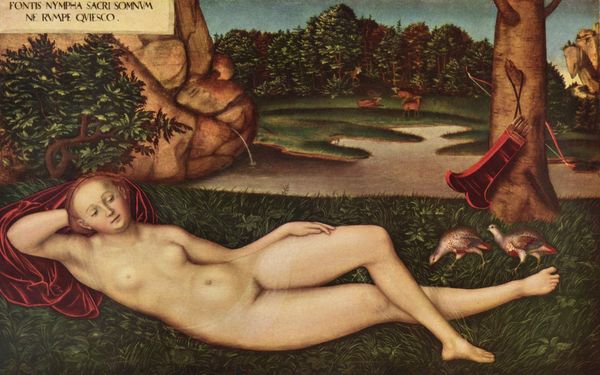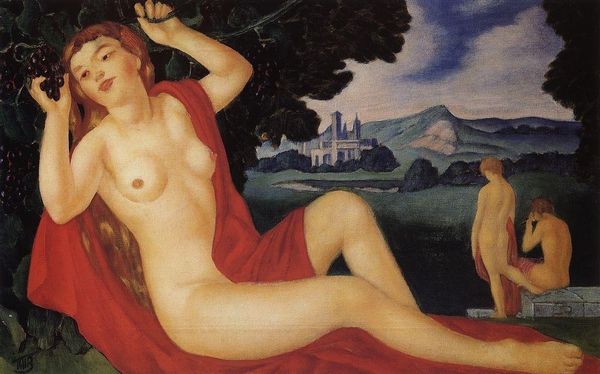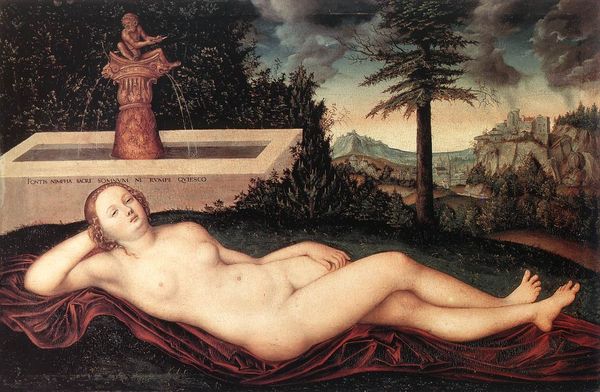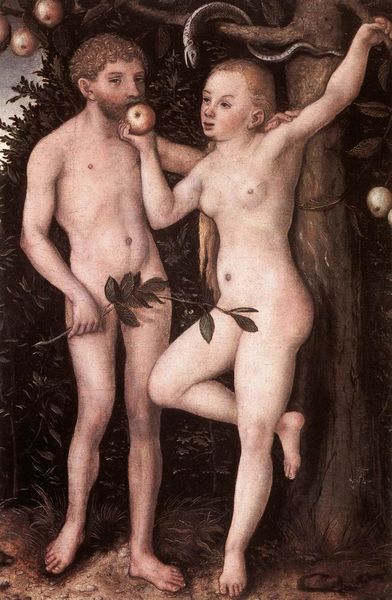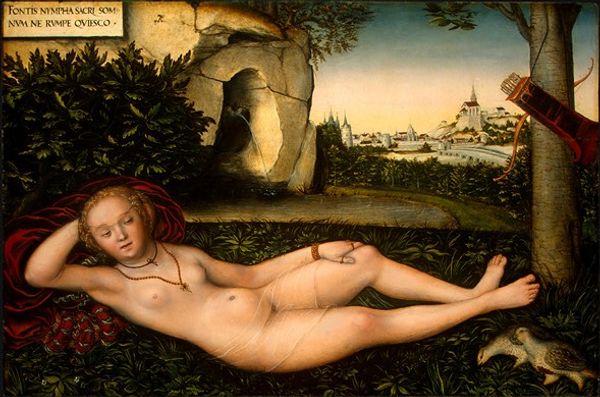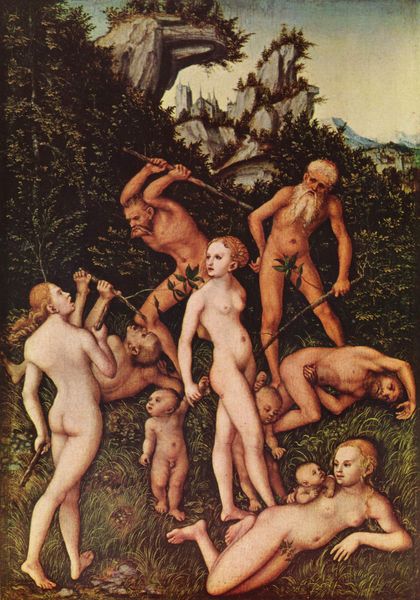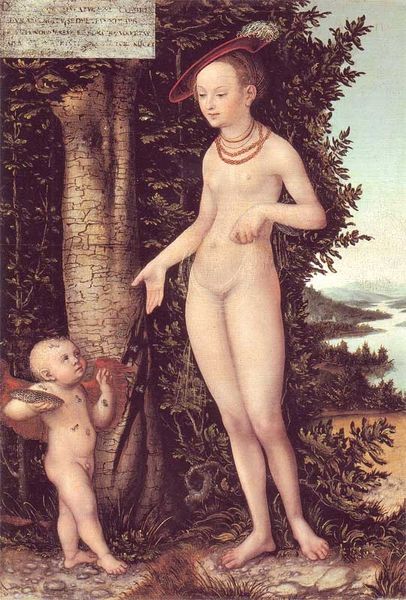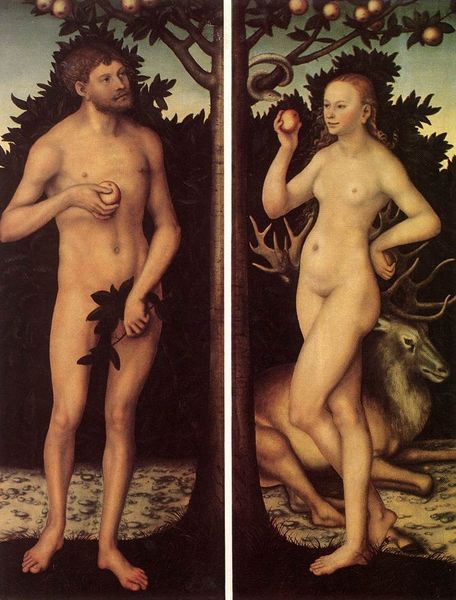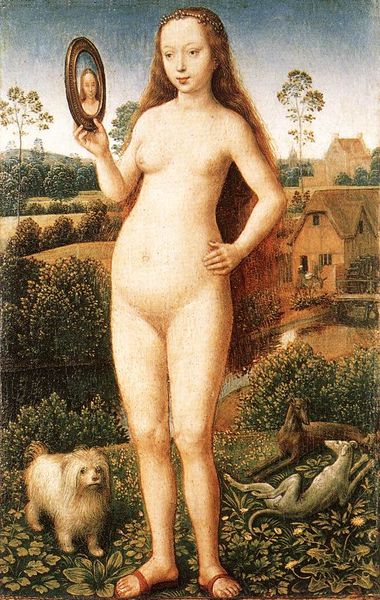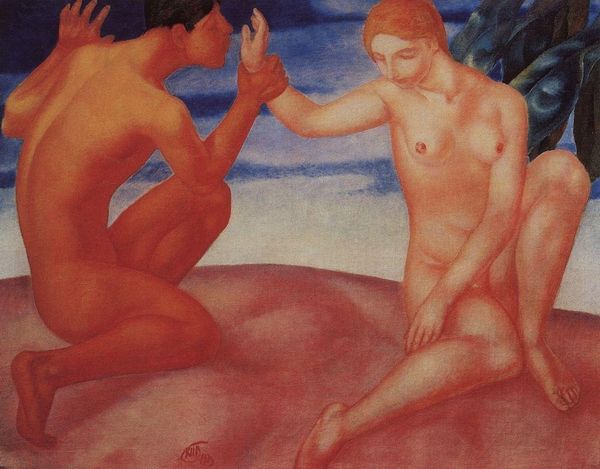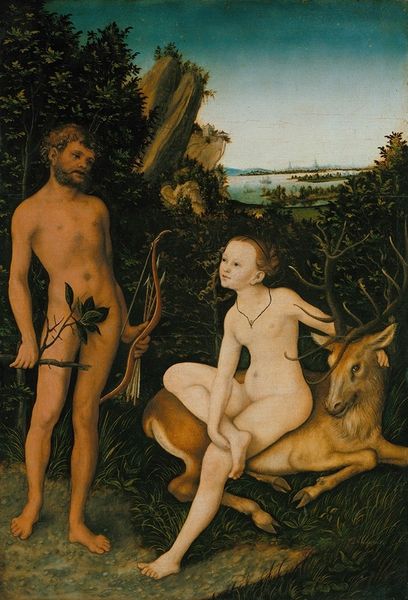
Reclining Diana 1515
0:00
0:00
lucascranachtheelder
Musée des Beaux-Arts et d'archéologie de Besançon, Besançon, France
painting, oil-paint
#
portrait
#
allegory
#
painting
#
oil-paint
#
landscape
#
11_renaissance
#
oil painting
#
roman-mythology
#
mythology
#
genre-painting
#
northern-renaissance
#
nude
Copyright: Public domain
Curator: I'm struck by the cool tranquility radiating from Lucas Cranach the Elder's "Reclining Diana," painted in 1515 using oil paint. She looks as though she’s enjoying a blissful summer afternoon. Editor: There's definitely a dreamlike, unsettling quality to it for me, too. That very fair, seemingly defenseless nude figure contrasted with the hunting gear – bow and arrows – feels…fraught. Curator: The imagery blends pagan mythology with a very contemporary, Northern Renaissance sensibility. Cranach was court painter to the Electors of Saxony, after all. It seems important that he depicted this scene within the familiar hunting culture of the ruling classes. Editor: Precisely! Diana, the Roman goddess of the hunt, is presented here both as powerful huntress – symbolized by her discarded bow – and a vulnerable woman. This tension speaks to larger ideas around the time about female agency. Curator: Yes, and note the inscription above her head. "FONTHIS NYMPHA SACRI SOMNUM NE RVMPF QVIESCO"—"I am a nymph of the sacred spring; do not disturb my sleep.” It acts as a ward against intrusion into this sacred space. Editor: The inclusion of Latin certainly added layers of cultural significance at that time, especially to those fluent in it. Did it amplify her sense of remoteness and unattainability? Curator: Potentially, yes. There’s a duality in the symbolic vocabulary he employs. He connects a classical story of the Roman gods with everyday existence, offering an access point into an idyllic allegory of feminine virtue. The location, now held at the Musée des Beaux-Arts et d'archéologie de Besançon, speaks to how cultural tastes shifted around it and where meaning was anchored through time. Editor: Ultimately, that duality between powerful symbol and vulnerable form continues to give “Reclining Diana” an undeniably complicated and evocative presence, even today. Curator: Absolutely. And understanding the symbolic history certainly helps ground us as interpreters and viewers within the historical matrix.
Comments
No comments
Be the first to comment and join the conversation on the ultimate creative platform.
